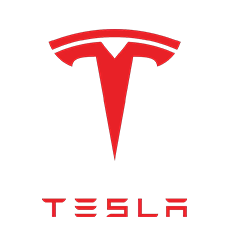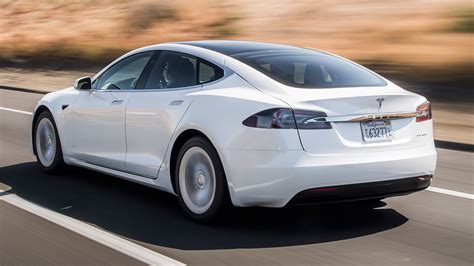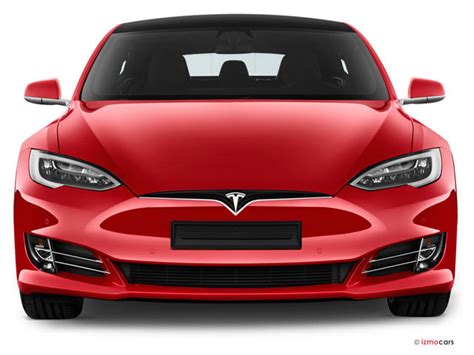2017 Tesla Model s problems

The Tesla Model S is a battery electric executive car with a liftback body style built by Tesla, Inc. since 2012. The Model S features a battery-powered dual-motor, all-wheel drive layout, although earlier versions featured a rear-motor and rear-wheel drive layout.
Development of the Model S began prior to 2007, under the codename "WhiteStar". The Model S was officially announced on June 30, 2008, and a prototype vehicle was unveiled in March 2009. The Model S debuted on June 22, 2012. A revised, dual-motor, all-wheel-drive version, known as the 60D, debuted on October 9, 2014. The 60D was followed by the 70D, which made dual-motor and all-wheel drive the standard, followed by the 85D, P85D, and P90D. Along with these updates, Tesla offered the Autopilot driving assistance system. The first major design refresh came in April 2016 when the Model S was updated with a new front hood design. In October of the same year, hardware became standard that supports Tesla's Full Self Driving (FSD) capability. As part of the update, integrated standard cameras around the car were added. In February 2017 the Tesla Model S P100D debuted, which included a revised motor and was the first electric vehicle to have an EPA estimated range exceeding 300 miles (483 km). The second major design refresh, codenamed "Palladium", was introduced in June 2021, offering a new "Plaid" performance model, along with a revised interior, powertrain, and suspension.
The Model S became the first electric car to top the monthly new-car-sales ranking in any country, leading twice in Norway, in September and December 2013 and in Denmark in December 2015. Sales passed 250,000 units in September 2018. The Model S was the top-selling plug-in electric car worldwide in 2015 and 2016, although it was later surpassed by the Model 3. Upon its release, the Model S received positive reviews, with praise for its acceleration and range, although initial models received criticism for their high cost and braking issues.

Social links
Common 2017 Tesla Model s problems
Based on the complaints from owners of the Tesla Model S 2017, here is a list of common problems with this car:
- Left Rear Wheel Camber Issue: Owners reported a problem with the left rear wheel camber causing severe uneven tire tread wear on the inside of the left tire, leading to early replacement. This issue was noted to be irreparable.
- In-car Electronics Malfunctions: Complaints included issues with the infotainment system (audio, GPS, phone), rear entertainment system, backup camera/sensors, and head-up display. Some owners experienced slowdowns, blank screens, and communication system failures that required upgrades or replacements.
- Malfunctioning Media Control Unit (MCU): Some 2012 to 2018 models faced recalls due to MCU malfunctions, leading to blank screens, rearview camera failures, and windshield defroster issues. The repair involved replacing the overloaded 8GB multimedia card with a 64GB replacement and software updates.
- Passenger Front Airbag Inflator Recall: Certain 2013 models were recalled due to a risk of the passenger front airbag inflator exploding during deployment. The repair included replacing the defective airbag module assembly.
- Instrument Cluster Malfunction: In some 2012 to 2014 models, the instrument cluster was prone to malfunction due to improperly soldered circuit boards. Replacing the defective instrument cluster with a new one resolved this issue.
- Corroded Bolts in Electric Motor: Models from 2012 to 2016 faced recalls due to corroded bolts fastening the electric motor to the steering rack. This corrosion risked the bolts breaking and the electric motor detaching from the steering gear.
- Refrigerant Pressure Sensor Issues: Certain 2020 and 2021 models experienced malfunctioning refrigerant pressure sensors, leading to improper functioning of the heater and air conditioning system. Replacing the defective sensors resolved this problem.
- Steering Issues: In vehicles driven in snowy climates, the U-joint in the lower section of the steering ice shaft could rust, causing difficulties in turning the steering wheel. Installing a new lower steering ice shaft addressed this issue.
- Rear Drive Unit Noises: Some 2013 and 2014 models had rear drive units prone to making clunking noises during acceleration and humming noises at higher speeds due to inadequate grease. Replacing the faulty rear drive unit solved this problem.
- Parking Brake Caliper Gear Breakage: Certain 2016 models faced recalls because a gear inside the parking brake calipers was prone to breaking, leading to the parking brake not engaging properly. The repair involved replacing both parking brake calipers with new ones.
These common problems highlight various technical and safety issues that owners of the Tesla Model S 2017 have encountered, emphasizing the importance of regular maintenance and prompt repairs to ensure optimal performance and safety.

Is Tesla S model reliable?
We expect the 2024 Model S will be less reliable than the average new car.
What are the disadvantages of Tesla Model S?
Cons: Charging your car at home results in an electricity bill that is not as cheap as I had anticipated. The registration costs are over $1,000, significantly higher compared to the $200 registration fee for my previous car. The car insurance costs considerably more as well.
What is the common problem with Tesla cars?
Noises and Rattles
Some Tesla owners have reported hearing unusual noises or rattling sounds from the suspension system, especially when driving on rough roads. These noises may indicate a need for inspection and potential repairs.
What is the best year for Tesla Model S?
Overall, the Tesla Model S is not a very reliable selection if you care about dependability. If you get the car, we recommend the 2018, 2019, 2020, 2021, and 2022 options for the best results. We hope this information is beneficial!
2017 Tesla Model s complaints
The NHTSA has received 0 complaints about various vehicle components related to the 2017 Tesla Model s.
You can leave your car complaint via the special form below.
2017 Tesla Model s recalls
The National Highway Traffic Safety Administration (NHTSA) has issued 9 recalls for different components of the 2017 Tesla Model s.
- Manufacturer: Tesla, Inc.
- Components: SEAT BELTS:FRONT:WARNING LIGHT/DEVICES
- Summary: Tesla, Inc. (Tesla) is recalling certain 2012-2024 Model S, 2015-2024 Model X, 2017-2023 Model 3, and 2020-2023 Model Y vehicles. In the event of an unbelted driver, the seat belt warning light and audible chime may not activate as intended. As such, these vehicles fail to comply with the requirements of Federal Motor Vehicle Safety Standard number 208, "Occupant Crash Protection."
- Consequence: A seat belt warning system that fails to alert occupants of an unbelted seat belt can increase the risk of injury during a crash.
- Remedy: Tesla will release an over-the-air (OTA) software update. Owner notification letters were mailed July 26, 2024. Owners may contact Tesla customer service at 1-877-798-3752. Tesla's number for this recall is SB-24-00-008.
- Manufacturer: Tesla, Inc.
- Components: ELECTRICAL SYSTEM: INSTRUMENT CLUSTER/PANEL
- Summary: Tesla, Inc. (Tesla) is recalling certain 2012-2023 Model S, 2016-2024 Model X, 2017-2023 Model 3, 2019-2024 Model Y, and 2024 Cybertruck vehicles. An incorrect font size is displayed on the instrument panel for the Brake, Park, and Antilock Brake System (ABS) warning lights. As such, these vehicles fail to comply with the requirements of Federal Motor Vehicle Safety Standard number 105, "Hydraulic and Electric Brake Systems" and 135, "Light Vehicle Brake Systems."
- Consequence: Warning lights with a smaller font size can make critical safety information on the instrument panel difficult to read, increasing the risk of a crash.
- Remedy: Tesla began releasing an over-the-air (OTA) software update, free of charge. Owners may contact Tesla customer service at 1-877-798-3752. Tesla's number for this recall is SB-24-00-003.
- Manufacturer: Tesla, Inc.
- Components: ELECTRICAL SYSTEM:ADAS:AUTONOMOUS/SELF DRIVING:SOFTWARE
- Summary: Tesla, Inc. (Tesla) is recalling 2012-2023 Model S, 2016-2023 Model X, 2017-2023 Model 3, and 2020-2023 Model Y vehicles equipped with all versions of Autosteer leading up to the version(s) that contains the recall remedy. In certain circumstances when Autosteer is engaged, the prominence and scope of the feature's controls may not be sufficient to prevent driver misuse of the SAE Level 2 advanced driver-assistance feature.
- Consequence: In certain circumstances when Autosteer is engaged, and the driver does not maintain responsibility for vehicle operation and is unprepared to intervene as necessary or fails to recognize when Autosteer is canceled or not engaged, there may be an increased risk of a crash.
- Remedy: Tesla will release an over-the-air (OTA) software update, free of charge. Owner notification letters were mailed February 10, 2024. Owners may contact Tesla customer service at 1-877-798-3752. Tesla's number for this recall is SB-23-00-008.
- Manufacturer: Tesla, Inc.
- Components: STEERING:AUTOMATED/ADAPTIVE STEERING
- Summary: Tesla, Inc. (Tesla) is recalling certain 2016-2023 Model S, Model X, 2017-2023 Model 3, and 2020-2023 Model Y vehicles equipped with Full Self-Driving Beta (FSD Beta) software or pending installation. The FSD Beta system may allow the vehicle to act unsafe around intersections, such as traveling straight through an intersection while in a turn-only lane, entering a stop sign-controlled intersection without coming to a complete stop, or proceeding into an intersection during a steady yellow traffic signal without due caution. In addition, the system may respond insufficiently to changes in posted speed limits or not adequately account for the driver's adjustment of the vehicle's speed to exceed posted speed limits.
- Consequence: FSD Beta software that allows a vehicle to exceed speed limits or travel through intersections in an unlawful or unpredictable manner increases the risk of a crash.
- Remedy: Tesla will release an over-the-air (OTA) software update, free of charge. Owner notification letters were mailed April 15, 2023. Owners may contact Tesla customer service at 1-877-798-3752. Tesla's number for this recall is SB-23-00-001.
- Manufacturer: Tesla, Inc.
- Components: STEERING:ELECTRIC POWER ASSIST SYSTEM
- Summary: Tesla, Inc. (Tesla) is recalling certain 2017-2021 Model S and Model X vehicles. The electronic power assist steering (EPAS) system may experience a loss of power steering assist when driving on rough roads or after hitting a pothole.
- Consequence: A loss of power steering assist can require greater steering effort, especially at low speeds, increasing the risk of a crash.
- Remedy: Tesla has released an over-the-air (OTA) software update to recalibrate the EPAS system, free of charge. Owner notification letters were mailed December 31, 2022. Owners may contact Tesla customer service at 1-877-798-3752. Tesla's number for this recall is SB-22-00-014.
- Manufacturer: Tesla, Inc.
- Components: ELECTRICAL SYSTEM:ADAS:AUTONOMOUS/SELF DRIVING:SOFTWARE
- Summary: Tesla, Inc. (Tesla) is recalling certain 2016-2022 Model S and Model X, 2017-2022 Model 3, and 2020-2022 Model Y vehicles. The "rolling stop" functionality available as part of the Full Self-Driving (Beta) software may allow the vehicle to travel through an all-way stop intersection without first coming to a stop.
- Consequence: Failing to stop at a stop sign can increase the risk of a crash.
- Remedy: Tesla will perform an over-the-air (OTA) software update that disables the "rolling stop" functionality, free of charge. Owner notification letters were mailed March 28, 2022. Owners may contact Tesla customer service at 1-877-798-3752. Tesla's number for this recall is SB-22-00-001.
- Manufacturer: Tesla, Inc.
- Components: LATCHES/LOCKS/LINKAGES:HOOD:LATCH
- Summary: Tesla, Inc. (Tesla) is recalling certain 2014-2021 Model S vehicles. The front trunk latch assembly may be misaligned, preventing the secondary hood latch from engaging. As such, these vehicles fail to comply with the requirements of Federal Motor Vehicle Safety Standard number 113, "Hood Latch System."
- Consequence: If the primary latch is inadvertently released and the secondary latch is not engaged, the hood could open unexpectedly, obstructing the driver's view and increasing the risk of a crash.
- Remedy: Tesla Service will inspect and reposition the latch assembly as necessary, free of charge. Owner notification letters were mailed February 18, 2022. Owners may contact Tesla customer service at 1-877-798-3752. Tesla's number for this recall is SB-21-11-003.
- Manufacturer: Tesla, Inc.
- Components: FORWARD COLLISION AVOIDANCE: SENSING SYSTEM: CAMERA
- Summary: Tesla, Inc. (Tesla) is recalling certain 2017-2021 Model S, Model 3, Model X, and 2020-2021 Model Y vehicles operating software version 2021.36.5.2. A communication error may cause false forward-collision warning (FCW) or unexpected activation of the automatic emergency brake (AEB) system.
- Consequence: Unexpected activation of the AEB system may cause the car to stop suddenly, increasing the risk of a crash.
- Remedy: Tesla Service has released an over-the-air (OTA) software update, free of charge. The recall began October 25, 2021. Owners may contact Tesla customer service at 1-877-798-3752. Tesla's number for this recall is SB-21-00-004.
- Manufacturer: Tesla, Inc.
- Components: BACK OVER PREVENTION:SOFTWARE
- Summary: Tesla, Inc. (Tesla) is recalling certain 2012-2018 Tesla Model S and 2016-2018 Model X vehicles with a center display equipped with a NVIDIA Tegra 3 processor and an 8GB eMMC NAND flash memory device. When the 8GB eMMC NAND flash memory device for the center display reaches lifetime wear, the eMMC controller will no longer be able to maintain the integrity of the filesystem, causing a failure in some of the center display functions.
- Consequence: The eMMC controller wear-out condition can cause the loss of the rearview camera display, defrost/defog control settings, and exterior turn signal lighting, reducing visibility and increasing the risk of a crash.
- Remedy: Owners should ensure their vehicles are operating firmware release 2020.48.48.12 or newer, which will alert owners if the eMMC is approaching lifetime wear. Tesla will notify owners, and will replace the VCM daughterboard with one containing an enhanced eMMC controller, free of charge. The recall began March 29, 2021. Owners may contact Tesla customer service at 1-877-798-3752. Tesla's number for this recall is SB-21-21-001.
Negative 2017 Tesla Model s car reviews
Positive 2017 Tesla Model s car reviews
-

I was originally planning to wait for the model 3 to save money, but I didn't want to wait any longer after my lease was up. As someone living outside of Detroit, I expected people to be upset that I didn't get something from GM, Ford or Chrysler. However, I am absolutely in love with this car and I tell people about it all the time. Last year, I had a 60D and someone hit me driving at 45 mph. The car is incredibly safe, I walked out of my car without any injury. Of course, there was some damage to the car, but I wouldn't trade it for anything else. It amazes me every time I sit in it. There are constant updates to make things better and its performance is great. My husband always smiles when he hops in to take it out instead of his truck.
-

The Tesla Model S is an incredible product, much like the iPhone. Although it may be expensive, it is definitely worth the investment. The advanced technology, quiet ride, and impressive acceleration and performance make it a truly remarkable car. As an electric car, it requires very little maintenance, eliminating the need for oil changes and other costly services. Once you experience the Tesla Model S, you'll understand just how much of a game changer it truly is. I must disagree with another review that claimed charging is difficult and that superchargers don't work. In my experience, charging has been easy and convenient, and I appreciate not having to stop at gas stations anymore. I've even driven between San Francisco and Los Angeles multiple times and have never encountered a single out-of-order supercharger in the three years I've owned my Model S. Overall, I can confidently say that the Tesla Model S is not only the best car I've ever owned, but one of the best products I've ever had the pleasure of using.
-

I recently purchased a 75D and it has far exceeded my expectations! Although the 75D is not the quickest of the Tesla bunch, I find it plenty fast for my needs. The acceleration is impressive, quick, and quiet. Compared to a similarly priced Mercedes or Lexus, the seats on a long trip do not provide the same level of comfort. However, everything else about the car is just plain cool and technologically advanced. The view out the glass roof is amazing for rear passengers. It is on the pricey side, but it's no longer on my bucket list. After 14 months of ownership, I still find it impressive and fun to drive. The visibility out the rear-view mirror isn't great, so I always drive with the rear camera on and viewed on the top half of the iPad-like display - love this feature. The original navigation system had flaws, but a recent software upgrade improved it - now powered by Google Maps. Occasional free software upgrades continue to improve the vehicle. It's nice to have free lifetime supercharging on long trips. When using the nav system, the computer calculates if there is enough charge to get to your destination. If not, it will direct you to supercharging locations along the way. Another follow-up after 27 months - it still feels amazing to drive after 2+ years. I had a minor noise issue with the front window, but the service center took care of it quickly. While there, I requested a performance software upgrade (my model did 0-60 in 5.3 secs) and it was loaded free of charge (now 0-60 in 4.3) - a huge difference. Once again, not
-

I never thought I would be buying a Tesla, but after my business partner bought a Model P 100d and took me for a ride, I was blown away. As someone who owns two Porsches, both turbos, I can confidently say that the Tesla was the fastest car I have ever been in. I went and test drove one myself and was so impressed that I bought one the next week! One of the things I love most about my Tesla is not having to buy gas!
-

I researched several car brands including Mercedes, BMW, Audi, VW, and Volvo. While I gave them a chance, I found that they were not very accommodating to customers who were not interested in purchasing a fossil fuel car for 50k or more. In contrast, the Tesla showroom was a welcoming and exciting environment. The salesmen were not pushy and even allowed me to take a long test ride. The car was phenomenal and even had the ability to back into a space. Although it took me a while to get used to the touch screen, the salesmen were helpful in showing me how to turn it off while driving. I even wrote to Elon Musk with a few ideas, and three of them were implemented. It's disappointing that Tesla cannot be sold in five states, including Connecticut, while GM will be building ten electric cars in China. However, the Tesla has the added benefit of guiding your trip through charging stations for free. Overall, I highly recommend the Tesla and suggest getting it without the new auto systems to save money.You can add them on later when the bugs are worked out. But it's hard to consider another car after testing this car. Imagine a guy coming from South Africa, Elon Musk, and building the best car in our country. That's the American dream. Please support this company. If you can't afford it, look for the model 3 to come later this year. There are around 400,000 orders in for this for about 38,000 dollars. And to conclude, I worked for the oil industry for years and saw the pollution. While we do need oil for planes and plastics, we won't need it for cars much longer.
Additional sources
More sources of information about 2017 Tesla Model s problems:

What are some common Tesla Model S problems and how much do ...
May 22, 2023 ... The most common Tesla problem is running out of windshield washer fluid. A gallon costs about $5, and a fill is about a quart, so $1.25. The ...
2017 Tesla Model S Reliability - Consumer Reports
What Owners Say ... "There is a irreparable problem with the left rear wheel camber that causes severe uneven left inside tire tread wear requiring early ...

If I were to buy a ten-year-old Tesla Model S, would I be jumping into ...
Jul 8, 2023 ... What are some common Tesla Model S problems and how much do they cost to fix? I have a 2017 Model S P100D. I bought it in September 2021 ...
Couple of questions on 2017 Used Model S | Tesla Motors Club
Sep 14, 2022 ... Terms of torque and my is kinda limited. What could be the problem ? 4) I do usually keep my car charged every night til 80%. Even though my ...

2017 Model S 100D. What to look for on test drive? : r/TeslaLounge
Feb 5, 2023 ... I know they're very “simple” cars compared to a gas car, but just wondering what common quirks I should try to identify. Also, unrelated, does ...
Other years of Tesla Model s






Are you having problems with your 2017 Tesla Model s?



Cody Crona 2025-08-08
The Model S is a great car in many ways, but it may not always function perfectly. As a Model S owner for 13 months, I was initially expecting a lot, especially since my previous cars were Toyotas and Hondas known for their reliability. However, I have had to call for service a few times due to computer glitches that prevented my car from moving or caused the touchscreen to blank out while driving. Despite these issues, I appreciate the stylish design and quick acceleration of the car, and the customer service reps have always been polite and helpful. While Tesla is still working out some glitches, I believe they are like a new computer company that will continue to improve. It's worth noting that my car has lost about 15 miles of range in 13 months and about 17,000 miles, but overall I am still satisfied with my purchase.
Charlie Sanford 2025-02-13
Repair parts for the car are not readily available. In this case, the MCU went bad after 30 months (2017 Model S) and Tesla has not provided a replacement date yet, even after almost 2 weeks. As the computer that controls all the car functions, it is surprising that a major car manufacturer would not have ready stocks of such an essential component for a $100,000 automobile that is not even 3 years old.
Philip Kozey 2024-09-22
This car was so different from anything else I drove in the past that I had to have it. It accelerates effortlessly, it's quiet, comfortable and feels like a spaceship inside. It definitely has that wow factor! However, after only a few weeks of driving it, I'm not sure it was worth the hefty price. Tesla has done an outstanding job of taking all of the gas savings you get from an electric car and all of the government tax incentives and including them in the MSRP. So, you end up paying all of those savings upfront to Tesla. You also need to plan to pay for an EV charger in your home or somehow have one available. I also quickly learned that the 259 EPA rated range doesn't apply if you want to have fun driving the car. It's important to note that you are only supposed to charge the car to 90% or lower unless you want to ruin the battery long term. As for how it drives, the acceleration is really fun, but it's a very heavy large car that drives like one. The handling and steering are unimpressive compared to a BMW or Porsche that you can buy in this price range. Don't get me wrong, it's a great car, but you are paying a king's ransom for it. If I had to do it over again, I would spend more time considering the alternatives rather than being awestruck by my initial Tesla test drive. It's also important to keep in mind that Tesla can introduce a massive change to your car the day after you take delivery, so resale value in a few years or even after a few weeks may be affected.